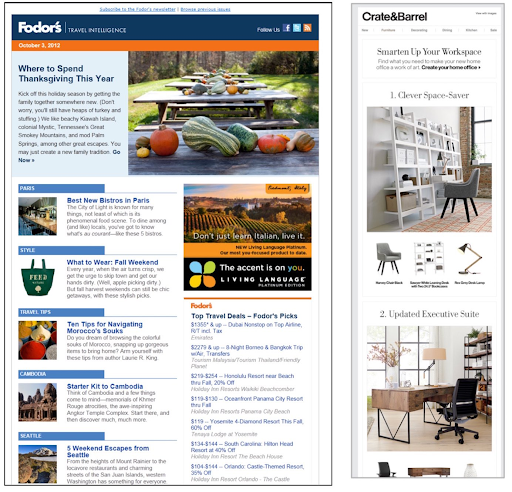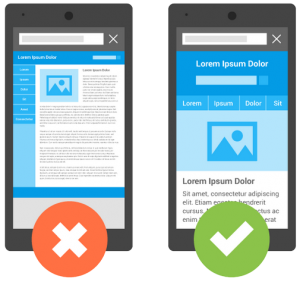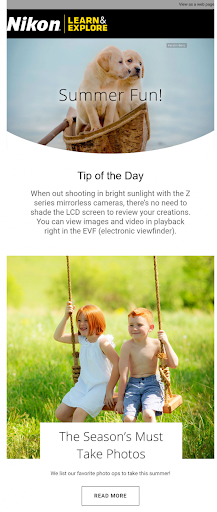How often have you purchased a product or a service through an email?
Let me guess – Many, hardly any?
It might come as a surprise but on every $1 you spend on email marketing the average ROI is $42. Here’s the question – Should you be missing out on this valuable conversion opportunity owing to the misconception that email is dead!!!
Let me clear the air here before we come to a conclusion. The ROI differs for every industry, service, and product just like any other form of marketing.
The credibility of email marketing lies in its potential to create an overall impact right from creating awareness, engagement, and conversion. It’s one of the most rewarding marketing strategies compared to all the other digital advertising channels.
If so, why are the open rates of email marketing so low resulting in lesser lead generation?
The average conversion rates for an email vary between 7.13% and 14.55% which seems difficult going by the standards but isn’t impossible with the right strategy. Listed are some of the strategies that have worked for us combined with tips from industry experts. Let’s dive right in on the valuable insights to improve the conversion rates.
Tips to drive conversions with email newsletters
Nail your subject line
The first metric taken to account leading to conversion is the open rate. The key to ensuring that your prospective customers open an email is to get them hooked to the subject line. People are most likely to open an email if they find the subject line relevant and interesting. Getting your subject line right can make your customers open, delete, or even mark your email as spam.
Several types of subject lines instigate different emotions in customers varying from Curiosity, Urgency, Scarcity, Vanity, Greed, etc. Hence, keep your subject line crisp and clear while ensuring that it delivers the right emotion to your customers. It all narrows down to whether your subject line should render your email click-worthy.
When it comes to B2B, I personally like no-crap, straight to point headlines like the one from Search Engine Journal. It sets the expectation right from the get-go with a piqued curiosity with the mention of “competitors”.
Keep it personal
The better the relationship with your customers, the higher the probability of them purchasing your product/service. Drafting personal newsletters will help you establish a strong relationship with your customers. Let your subscribers know who you are. Resorting to this approach is a pathway to build winning conversations.
Currently, only about 20% of the newsletters are curated to give a personal touch. Besides, keeping your newsletter campaigns personal will help you avoid the “Promotions” tab. Althemore, you could also use some tools to draft your personal newsletters increase inbound leads.
Get your preview text right
Not only is your subject line important, but the preview text also plays a key role. Hence, craft the first line of your email carefully as it decides the customers’ actions. Construct a sense of importance with 35 to 140 characters to draft a strong pretext. Find words that will hook your customers in the first 2 seconds of reading the pre-text.
Understanding the types of pretext that entices your customers can be a good starting point. Great pre-texts can boost open rates. It is also important to know that more than half the users open emails on their smartphones. Pre-text in mobile phones is more prominent than the subject line as you can see below.
Hence, focus your key content in the first half of the preheader and use the right words to hook your customers in.
Be Visual
A picture is worth a thousand words. If you are sending out text-heavy newsletters, you may have to rethink your approach. Newsletters with only text make them boring and reduce the chances of even being opened. In contrast, creating timely, creative-rich email newsletters gives life to a bunch of sentences. There are multiple tools that cater to the individualized scale of each organization for creatives with built-in templates such as Rocketium, Canva, and Crello.
A few years ago, newsletters incorporated thumbnail-sized images paired with text. However, in the current times, creatives are no longer considered supplementary or decorative. They have become a key fixture for many newsletters and even whitepapers. A comparison between Fodor’s newsletter in 2012 and Crate&Barrel’s newsletter in 2019 provides a clear understanding of how imagery was used in emails of the past compared to emails in the present days.
The newsletter by Crate&Barrel is more legible and easier to read due to its comprehensive mix of images and text. Hence, ensure to include relevant images with a clear description along with text to notice a stark difference in your conversions. Some companies even incorporate GIFs. For example, Burberry promoted their new line of formal shoes including a GIF in their newsletter.
Be responsive
Both you and the newsletters that are sent out have to be responsive to the customers’ usage. In the image below, you can see the difference between a newsletter that is responsive and one that is not. Responsiveness is crucial for readability which plays a key role in click-through rates.
With an average of 50% of the customers opening their email on their phones, mobile optimization should be an important measure to factor in while you send out newsletters. Usually, customers immediately delete an email if it’s not mobile-friendly. So, here are some tips to improve your responsiveness:
- Use a single-column layout that is no wider than 600 to 640 pixels.
- Use mobile-specific CSS.
- Buttons and links should have a target area of at least 44 x 44 pixels.
- Remember to keep your message concise.
- Increase the font size to increase readability.
- Reduce image size to decrease the loading time.
These five hacks must equip you to implement these hacks to increase your conversions. To give you a complete picture, let’s take a look at a couple of great email newsletters by Diesel, Stitch Fix, and Nikon that recorded some massive conversion numbers.
Newsletter inspiration
Diesel
Here is an example of an “Abandoned Cart” newsletter.
The newsletter begins with “You snooze, you lose.” Font in bold. This drives in the emotion of FOMO (fear of missing out) in their customers. This acts as a psychological trigger that makes the customers respond quickly. To improve its effectiveness, Diesel adds a snippet that compares online shopping with real-life shopping. This strategy helped in converting more leads.
Stitch Fix
This newsletter by Stitch Fix is a great example of a personalized newsletter. The customer receives a birthday offer with a ‘treat yourself’ incentive. An interesting aspect of this newsletter is its attempt to give the people an idea of what they can expect once they place an order on Stitch Fix. From dressing in style to the little birthday dance around the room, Stitch Fix promises to enhance their birthday experience.
In addition, when this is combined with a Stitch Fix gift card, the offer turns irresistible. A combination of these strategies increased customer engagement and eventually boosted their conversion rate.
Nikon
Nikon’s newsletter provides a tip of the day along with a few other suggestions for people to improve their photography skills. The absence of promotional content makes this email appear more reliable. The visuals on the newsletter deliver a friendly tone which improves customer interaction and boost ROI.
Overall, aim to strategize your newsletters based on the type of customers in your marketing funnel. Getting yourself acquainted with these hacks can help you create powerful emails and increase conversions.









Really insightful read! Another helpful thing would be to segment your email list. This allows you to send emails relevant to the audience.